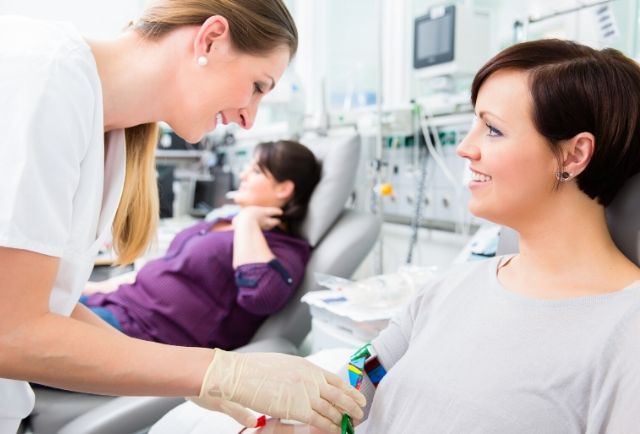Not known Details About Northeast Medical Institute - New Haven Campus Phlebotomy Course & Cna Class
Not known Details About Northeast Medical Institute - New Haven Campus Phlebotomy Course & Cna Class
Blog Article
Not known Details About Northeast Medical Institute - New Haven Campus Phlebotomy Course & Cna Class
Table of ContentsNortheast Medical Institute - New Haven Campus Phlebotomy Course & Cna Class Fundamentals ExplainedUnknown Facts About Northeast Medical Institute - New Haven Campus Phlebotomy Course & Cna ClassNortheast Medical Institute - New Haven Campus Phlebotomy Course & Cna Class for DummiesNortheast Medical Institute - New Haven Campus Phlebotomy Course & Cna Class Fundamentals ExplainedNortheast Medical Institute - New Haven Campus Phlebotomy Course & Cna Class Fundamentals ExplainedSome Known Details About Northeast Medical Institute - New Haven Campus Phlebotomy Course & Cna Class
The usage of such tools should be accompanied by various other infection avoidance and control techniques, and training in their use.For setups with low sources, price is a driving factor in procurement of safety-engineered devices. Where safety-engineered devices are not readily available, proficient usage of a needle and syringe is appropriate.
One of the necessary markers of quality of care in phlebotomy is the participation and cooperation of the client; this is equally valuable to both the health employee and the person. Clear info either created or spoken must be offered per patient that undergoes phlebotomy. Annex F provides example message for explaining the blood-sampling treatment to an individual. In the blood-sampling room for an outpatient department or center, offer a comfy reclining couch with an arm rest.
The Best Guide To Northeast Medical Institute - New Haven Campus Phlebotomy Course & Cna Class
Ensure that the indications for blood tasting are plainly specified, either in a composed procedure or in documented directions (e.g. in a lab form). In all times, adhere to the methods for infection prevention and control noted in Table 2.2. Infection avoidance and control methods. Accumulate all the tools needed for the treatment and location it within risk-free and simple reach on a tray or cart, making sure that all the items are plainly noticeable.
Present on your own to the individual, and ask the patient to state their complete name. Inspect that the research laboratory form matches the individual's identification (i.e. match the patient's information with the research laboratory type, to make certain precise recognition).
Make the individual comfortable in a supine position (preferably). Location a tidy paper or towel under the client's arm. Talk about the examination to be performed (see Annex F) and obtain verbal authorization. The person has a right to reject an examination at any moment before the blood tasting, so it is vital to guarantee that the patient has recognized the treatment.
Unknown Facts About Northeast Medical Institute - New Haven Campus Phlebotomy Course & Cna Class
Expand the individual's arm and evaluate the antecubital fossa or forearm. Locate a blood vessel of an excellent size that shows up, straight and clear. The representation in Area 2.3, shows typical positions of the vessels, however numerous variations are feasible. The typical cubital vein exists in between muscle mass and is normally one of the most very easy to penetrate.
DO NOT insert the needle where blood vessels are drawing away, due to the fact that this enhances the chance of a haematoma. The vein ought to show up without using the tourniquet. Locating the vein will help in determining the right size of needle. Apply the tourniquet regarding 45 finger sizes above the venepuncture site and re-examine the blood vessel.
Samplings from central lines bring a risk of contamination or wrong research laboratory test outcomes. It is appropriate, but not optimal, to attract blood samplings when very first presenting an in-dwelling site here venous gadget, before connecting the cannula to the intravenous fluids.
7 Simple Techniques For Northeast Medical Institute - New Haven Campus Phlebotomy Course & Cna Class
Failure to permit enough get in touch with time enhances the risk of contamination. DO NOT touch the cleansed website; in particular, DO NOT put a finger over the blood vessel to direct the shaft of the subjected needle.
Ask the patient to develop a clenched fist so the blood vessels are much more prominent. Go into the vein promptly at a 30 level angle or much less, and continue to introduce the needle along the capillary at the most convenient angle of entry - CNA Training. As soon as adequate blood has been collected, launch the tourniquet prior to taking out the needle
8 Easy Facts About Northeast Medical Institute - New Haven Campus Phlebotomy Course & Cna Class Shown
Withdraw the needle carefully and apply gentle pressure to the site with a clean gauze or completely dry cotton-wool ball. Ask the person to hold the gauze or cotton wool in position, with the arm expanded and elevated. Ask the client NOT to bend the arm, because doing so creates a haematoma.

The Facts About Northeast Medical Institute - New Haven Campus Phlebotomy Course & Cna Class Uncovered
Do not press the syringe bettor due to the fact that added stress boosts the risk of haemolysis. Where possible, maintain televisions in a shelf and relocate the rack in the direction of you. Infuse downwards into the proper coloured stopper. DO NOT get rid of the stopper due to the fact that it will certainly release the vacuum. If the example tube does not have a rubber stopper, inject incredibly slowly into television as minimizing the pressure and rate made use of to move the sampling minimizes the risk of haemolysis.

Report this page